Oxidative stress in prostate hyperplasia and carcinogenesis
- PMID: 27609145
- PMCID: PMC5017015
- DOI: 10.1186/s13046-016-0418-8
Oxidative stress in prostate hyperplasia and carcinogenesis
Abstract
Prostatic hyperplasia (PH) is a common urologic disease that affects mostly elderly men. PH can be classified as benign prostatic hyperplasia (BPH), or prostate cancer (PCa) based on its severity. Oxidative stress (OS) is known to influence the activities of inflammatory mediators and other cellular processes involved in the initiation, promotion and progression of human neoplasms including prostate cancer. Scientific evidence also suggests that micronutrient supplementation may restore the antioxidant status and hence improve the clinical outcomes for patients with BPH and PCa. This review highlights the recent studies on prostate hyperplasia and carcinogenesis, and examines the role of OS on the molecular pathology of prostate cancer progression and treatment.
Keywords: Antioxidants; Cancer treatment; Oxidative stress; Prostate cancer.
Figures

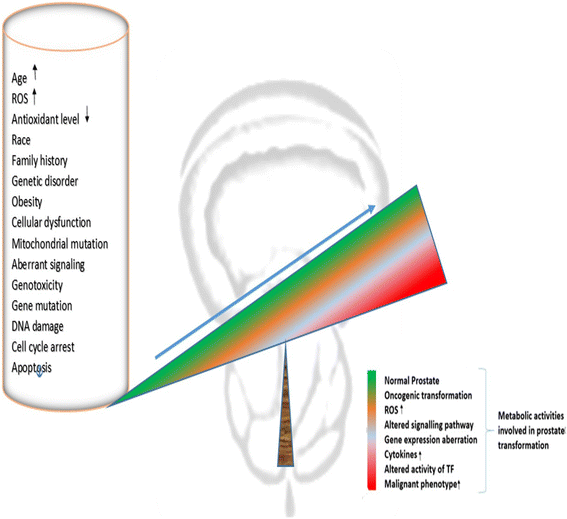
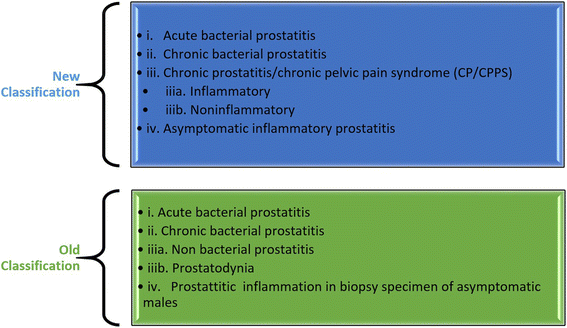
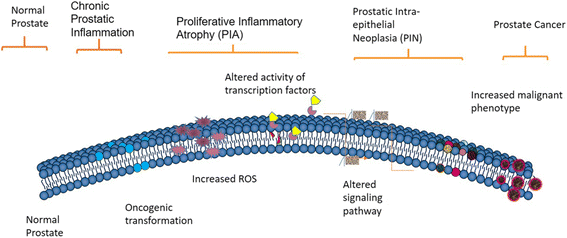
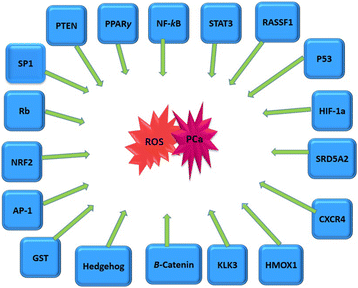
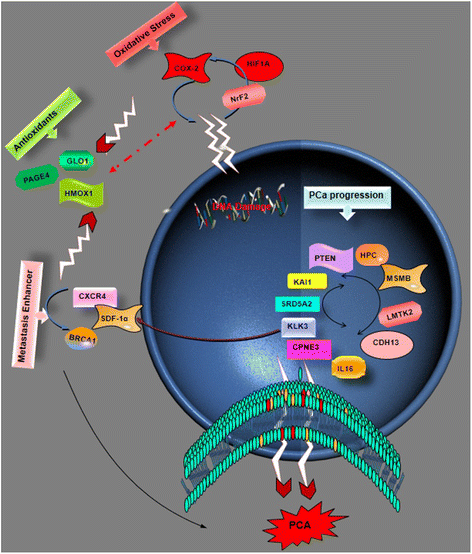
Similar articles
-
Oxidative stress parameters in patients with prostate cancer, benign prostatic hyperplasia and asymptomatic inflammatory prostatitis: A prospective controlled study.Adv Clin Exp Med. 2017 Oct;26(7):1095-1099. doi: 10.17219/acem/66837. Adv Clin Exp Med. 2017. PMID: 29211357
-
[Oxidative stress in prostate hypertrophy and carcinogenesis].Postepy Hig Med Dosw (Online). 2009 Jul 20;63:340-50. Postepy Hig Med Dosw (Online). 2009. PMID: 19644150 Review. Polish.
-
Oxidative stress in benign prostatic hyperplasia and prostate cancer.Urol Int. 2010;85(3):328-33. doi: 10.1159/000315064. Epub 2010 May 20. Urol Int. 2010. PMID: 20484887
-
The controversial relationship between benign prostatic hyperplasia and prostate cancer: the role of inflammation.Eur Urol. 2011 Jul;60(1):106-17. doi: 10.1016/j.eururo.2011.03.055. Epub 2011 Apr 9. Eur Urol. 2011. PMID: 21497433 Review.
-
The role of oxidative stress in prostate cancer.Eur J Cancer Prev. 2012 Mar;21(2):155-62. doi: 10.1097/CEJ.0b013e32834a8002. Eur J Cancer Prev. 2012. PMID: 21857523 Review.
Cited by
-
Glutathione Peroxidase 3 induced mitochondria-mediated apoptosis via AMPK /ERK1/2 pathway and resisted autophagy-related ferroptosis via AMPK/mTOR pathway in hyperplastic prostate.J Transl Med. 2023 Aug 26;21(1):575. doi: 10.1186/s12967-023-04432-9. J Transl Med. 2023. PMID: 37633909 Free PMC article.
-
T-2 Toxin Induces Oxidative Stress at Low Doses via Atf3ΔZip2a/2b-Mediated Ubiquitination and Degradation of Nrf2.Int J Mol Sci. 2021 Jul 25;22(15):7936. doi: 10.3390/ijms22157936. Int J Mol Sci. 2021. PMID: 34360702 Free PMC article.
-
Oxidative stress and redox signaling in CRPC progression: therapeutic potential of clinically-tested Nrf2-activators.Cancer Drug Resist. 2021 Mar 19;4(1):96-124. doi: 10.20517/cdr.2020.71. eCollection 2021. Cancer Drug Resist. 2021. PMID: 35582006 Free PMC article. Review.
-
Stereological comparison of intraprostatic injection of alcohol and bleomycin with finasteride gavages in rats.Cent European J Urol. 2017 Jun 30;70(2):163-169. doi: 10.5173/ceju.2017.1211. Epub 2017 Apr 13. Cent European J Urol. 2017. PMID: 28721283 Free PMC article.
-
Potential of Moringa oleifera in the Treatment of Benign Prostate Hyperplasia: Role of Antioxidant Defence Systems.Med Princ Pract. 2018;27(1):15-22. doi: 10.1159/000486349. Epub 2017 Dec 17. Med Princ Pract. 2018. PMID: 29248935 Free PMC article.
References
-
- Prostate Cancer FAQS. Prostate Cancer Foundation. http://www.pcf.org/site/c.leJRIROrEpH/b.5800851/k.645A/Prostate_Cancer_F.... Accessed 15 Apr 2016.
-
- Cancer Among Men, Center For Disease Control and Prevetion. http://www.cdc.gov/cancer/dcpc/data/men.htm. Accessed 15 Apr 2016.
-
- Theodorescu D. Prostate Cancer: Management of Localized Disease. 2004.
-
- Small E. Cecil Textbook of Medicine, Prostate Cancer. WB Saunders, an Elsevier imprint. 2004.
Publication types
MeSH terms
Substances
Grants and funding
LinkOut - more resources
Full Text Sources
Other Literature Sources
Medical

